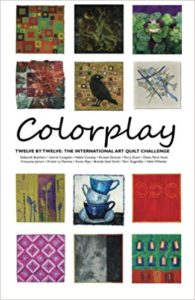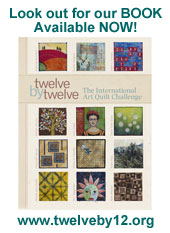
Entering 12 Degrees North and 12 Degrees West into Google Earth will take you to a dense area of foliage in the hinterlands of Guinea in West Africa, one of the countries plundered for the slave trade.
The men and women traded were put in boats and sent to the plantations of the Caribbean and the United States of America. From there goods such as cotton, tobacco and sugar, grown with the toil of shacked workers made their way across the Atlantic to the bustling seaport of Liverpool. The ships reloaded with textiles and alcohol - goods to barter for human cargo - and completed the triangle with voyages back to Africa. By the close of the 18th century 40% of the world's, and 80% of Britain's Atlantic slave activity was accounted for by slave ships that voyaged from the docks lining the River Mersey.
Even today there are streets around the city whose names stand as testimony to the nefarious history of Liverpool. Rodney Street, known as the Harley Street of Liverpool for its conglomeration of medical practice rooms, is named for Baron Rodney who was a champion of the slave trade. John Gladstone, father of Prime Minister William Ewart Gladstone, lived on Rodney Street. He made his wealth through the sugar plantations in Demerara and Jamaica.
Goree was a bare rock off the Cape Verde Islands where slaves were assembled for transport and which gave its name to the piazzas near the docks.
Hardman Street was named after the landowner John Hardman who earned his money in the slave trade.
However, despite the fact that slavery permeated Liverpool's institutions ( 16 mayors were slave traders and the town hall retains a frieze of a kneeling slave) the city also bred Abolitionists. Roscoe Street is named after William Roscoe, a lawyer (I am proud to say) who was the Member of Parliament for Liverpool in 1806 when he cast his vote for Abolition.
Every day, when I go to work, I walk past buildings which, whilst built after Abolition, were founded on the back of Liverpool's wealth and success as a port nation, achieved during the slavery era. These days the renovated docks house the International Slavery Museum which explores the city's historical legacy. However it is also currently housing an exhibition, Trafficked , highlighting the forms of slavery which still exist in today's society. Whilst we all celebrated the election of the first black president of the USA and his slave-descendant wife, modern slavery is the fastest growing form of organised crime in the world today. To find out more visit the website for the Anti-Slavery Organisation.
This quilt is made with a piece of tie resist fabric from Guinea, sourced through The African Fabric Shop and chosen for its chain like pattern. The degree symbols are beads also from West Africa. Street signs of significance are formed into luggage labels to represent the Trans-Atlantic voyages of the enslaved and to encourage the viewer to consider how far (or how little) we have come since Abolition. The quilt edge is unfinished, both to reveal the cotton, previously picked by slaves and to represent the incomplete extension of ftrue freedom to all human beings.
The men and women traded were put in boats and sent to the plantations of the Caribbean and the United States of America. From there goods such as cotton, tobacco and sugar, grown with the toil of shacked workers made their way across the Atlantic to the bustling seaport of Liverpool. The ships reloaded with textiles and alcohol - goods to barter for human cargo - and completed the triangle with voyages back to Africa. By the close of the 18th century 40% of the world's, and 80% of Britain's Atlantic slave activity was accounted for by slave ships that voyaged from the docks lining the River Mersey.
Even today there are streets around the city whose names stand as testimony to the nefarious history of Liverpool. Rodney Street, known as the Harley Street of Liverpool for its conglomeration of medical practice rooms, is named for Baron Rodney who was a champion of the slave trade. John Gladstone, father of Prime Minister William Ewart Gladstone, lived on Rodney Street. He made his wealth through the sugar plantations in Demerara and Jamaica.
Goree was a bare rock off the Cape Verde Islands where slaves were assembled for transport and which gave its name to the piazzas near the docks.
Hardman Street was named after the landowner John Hardman who earned his money in the slave trade.

However, despite the fact that slavery permeated Liverpool's institutions ( 16 mayors were slave traders and the town hall retains a frieze of a kneeling slave) the city also bred Abolitionists. Roscoe Street is named after William Roscoe, a lawyer (I am proud to say) who was the Member of Parliament for Liverpool in 1806 when he cast his vote for Abolition.
Every day, when I go to work, I walk past buildings which, whilst built after Abolition, were founded on the back of Liverpool's wealth and success as a port nation, achieved during the slavery era. These days the renovated docks house the International Slavery Museum which explores the city's historical legacy. However it is also currently housing an exhibition, Trafficked , highlighting the forms of slavery which still exist in today's society. Whilst we all celebrated the election of the first black president of the USA and his slave-descendant wife, modern slavery is the fastest growing form of organised crime in the world today. To find out more visit the website for the Anti-Slavery Organisation.
This quilt is made with a piece of tie resist fabric from Guinea, sourced through The African Fabric Shop and chosen for its chain like pattern. The degree symbols are beads also from West Africa. Street signs of significance are formed into luggage labels to represent the Trans-Atlantic voyages of the enslaved and to encourage the viewer to consider how far (or how little) we have come since Abolition. The quilt edge is unfinished, both to reveal the cotton, previously picked by slaves and to represent the incomplete extension of ftrue freedom to all human beings.



13 comments:
Helen, this is so very powerful and really stands alone as a message to the world that slavery is very real and alive today. Everything about this piece is moving.
Helen, this is another amazing connection between our theme and a deeply moving message. I'm always so impressed at how you manage that -- and using the latitudinal marks as your jumping off point just delights me. I love how your brain works.
The piece is very strong -- wonderful imagery, and a great way to illustrate the ideas. I love the unfinished edges showing the cotton batting, too.
You have done it again! You never fail to disappoint me. A very moving topic. You have done a very striking composition. I think it is the best so far — so simple and yet so strong in the composition of the elements and background fabric.
You always manage to find so much symbolism to incorporate into your theme, and I think this is your most successful piece to date. The chain fabric reads perfectly, and it's a great bonus that it came from Guinea. The luggage tags for the street names adds an appropriate layer to the story. I think without knowing many details, your basic premise comes through loud and clear and then comes into even more focus with every detail you've added. Great job!
When I was visiting my friend in Delaware last week she said, "I can't wait to see what Helen does for this last challenge!" I think of all the twelves, your work is always a surprise, always deeply thought-provoking and always finds its way to a personal connection for the viewer, usually through your own personal connection. Like this one, a reminder that as human beings we are all connected and uplifted by good in people, as we are diminished by the evil. Bravo!
Very interesting...I never would have thought to enter that into Google earth. But that's why your pieces are always so unique and interesting.
There is so much to love in your quilts, Helen - visual detail, design and the amazing stories behind every thoughtful piece. My favourite aspects of this quilt are the luggage tags (which for me represent the promise of excitement and adventure but here are such a poignant symbol of tragic journeys)and the chain fabric. That the fabric is from Guinea is such a needle-stab to the conscience.
You did it again! Thank you!
A thoughtful and thought-provoking piece - thank you.
I also visited Google Earth and the 12th parallel for inspiration but I came up blank. By contrast, you have created a rich and meaningful work connecting the past and the present. A true gift.
A very serious interpretation again. This one gives me goose bumps.. Your quilt is very effective.
So powerful. Helen, you really have a gift for using art to raise awareness about issues that are important to you. At the same time, you don't let the issue overshadow the art -- the quilt stands on it's own for its design.
I love that the fabric and beads come from Africa. So very thoughtful and effective.
very powerful and accurate use of Liverpools past yet connecting to present needs of people.Can readily identify with these themes because of shared heritage and yes I AM biased as her mother to vote this Number one!
Post a Comment